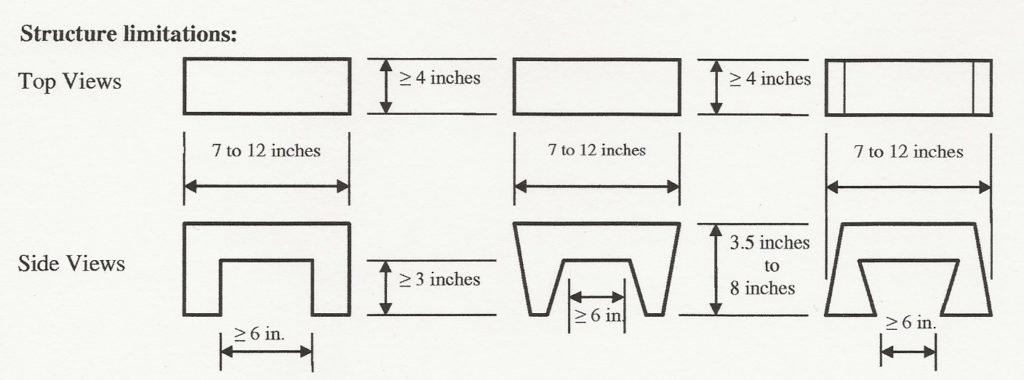Objective: To design and build the lightest bridge capable of supporting the heaviest load when weight is placed on a given span, using specified materials and guidelines.
Purpose: To encourage research and development prior to the contest, and to practice good construction technique.
Description:
Students will have to determine how to build a bridge using spaghetti or linguini. This event allows students a chance to behave as real world scientists and engineers when faced with a problem that has to be solved. They may work as individuals or as part of a team of up to 3 students.
Students will essentially follow scientific process when seeking the answer to the question of “how can we build the most efficient bridge?” By the time the students comes to the Expo, they will have learned through trial and error how to use the materials in the most efficient way. This advanced preparation will be demonstrated at the competition when the team presents its best effort.
Rules:
1. Projects can be built by individuals or by teams of up to 3 students.
2. Materials:
a. Students purchase their own materials.
b. Each bridge must be made entirely of store-bought spaghetti or linguini (no home-made pasta is allowed). As part of the presentation, show a box of the material for material verification.
c. Elmer’s white glue or a glue gun may be used to fasten the pieces of pasta together. No materials other than the glue and pasta specified may be used.
d. You may glue two strands of spaghetti (or linguini) together to form a single piece, but no more than two strands. This is referred to as double bonding.
e. You may cut, bend, or break the spaghetti. However, no other alterations of the pasta are allowed, such as cooking, painting, filling with glue or any other materials, etc.
f. A photo (or photos) of the completed bridge should be taken to show the bridge structure and measurements.
3. Structure:
a. The bridge is to be constructed so that the deck and the deck framework are supported by a vertical structure at each end (See Diagram for details on this and all the following).
b. The roadbed framework and vertical supports will form a clear opening under the bridge. The opening must be at least 6 in. wide and at least 3 in. high.
c. The roadbed must be at least 4 in. wide; flat, level enough to lay a 4 in. by 6 in. block on it at any point; and no part of the bridge structure can be above the roadbed.
d. The bridge height (from base to roadbed surface) must be at least 3.5 in. but no more than 8 in.
e. The bridge length must be at least 7 in. but no more than 12 in.
f. The total weight of the completed bridge may not exceed one pound (which is the weight of a mass equivalent to 453.59 grams).
4. Notebooks
a. Each person is required to keep his/her own notebook. The notebooks are for the students to enter their ideas, research information and sources, experimentation procedures and data, graphs, analyses, and conclusions. All entries must be dated. Once an entry is made, it is not destroyed. An incorrect entry will be crossed out with a single line, and followed by a corrected entry (or a note made where to find the corrected entry or entries).
b. At the end of the project, details from each notebook will be extracted and combined to make a single presentation on the display poster. All of the notebooks are required to be at the display. A summary sheet of notebook contents can be placed on top of each notebook to assist judge review.
5. Project Displays
a. Each project is required to have a display that must be within the following maximum sizes:
Depth (front to back): 30 inches or 76 centimeters
Width (side to side): 48 inches or 122 centimeters.
Height (floor to top): 108 in or 274 cm.
b. The project display should follow these guidelines:
(1) Display is within size limitations
(2) Title and objective at the top;
(3) Display is neat, organized & appealing;
(4) Should use proper spelling and grammar.
(5) Reasonable prediction of how well they would do
(6) Should mention other approaches that could have been used, and/or other areas that could have been investigated.
(7) Notebooks can be part of the display, but photos of some pages will be required for the presentation for judge review.
Helpful tips:
1. Use pasta made with semolina.
2. Use airtight bags to seal pasta up for the day/night between work sessions (zip-lock bags are a good option)
3. When gluing the bridge, make sure that proper edges are square and proper surfaces are flat.
4. Research types of bridge designs
5. Think “outside of the box.”
6. Be open to suggestions from others.
7. For construction ideas, click HERE.
Competition:
1. Each entry will be inspected to insure compliance with the specifications. Failure to adhere to measurements as given in the rules will lose points for the structure scoring, and result in a score of zero for the strength scoring.
2. The weight of the bridge will be recorded for use in the scoring of the strength competition.
3. For strength testing, the bridge will be placed into a Bridge Loader. A block 4 in. by 6 in. will be placed on the roadbed and a load will be applied to the block. The load will be increased in a continuous fashion until the bridge fails. Failure is defined as the inability of the bridge to carry any additional load without breakage. For more details on the testing procedure, click HERE.
4. Referring to the diagram of a possible strength tester, it is possible to put a weight-scale under the right end of the device to provide a measurement. If the distance from hinge to weight scale is twice the distance from hinge to bridge, the force applied to the bridge would be twice the force applied to the scale. Note the weight on the scale before applying pressure to the bridge. That is the weight of the device itself and must be subtracted from the total weight shown when the bridge is crushed.
5. The Official Load is the maximum load that the bridge withstood prior to destruction. This will be recorded for use in the scoring of the strength competition.
Diagram

Scoring of the competition:
The maximum score possible for the competition will be 70 points, and will be in two parts: The structure is worth 30 points, and the strength is worth 40 points.
Competition scoring part I – Scoring of the structure:
If all measurements of the bridge are within limits, the team will earn 30 points. Five points will be subtracted for every measurement that is not within limits.
Competition scoring part II – Scoring of strength:
1. If any dimension of the bridge is outside of the limitations, the bridge earns zero points for strength, no matter how much it might hold. Only fully qualified bridges may earn points for the strength competition.
2. The strength winner is the legal bridge with the highest Efficiency (Ratio of load to bridge weight). Efficiency is calculated by the following:
Bridge Efficiency = Maximum load applied to bridge ÷ Weight of the bridge
3. Strength winner is the bridge with the highest efficiency.
4. Strength score is calculated by the following:
Strength score = (Bridge Efficiency ÷ Winning Efficiency) X 40
Scoring of Notebook, Poster Board and Interview:
The maximum score is 30 points and considers the following:
- Display is within size limitations
- The poster shows Title and Objective at the top.
- The display was neat, organized, and appealing.
- Use of proper spelling and grammar
- The team made a compelling case for their prediction of how well they would do.
- The team was able to point out any newly discovered flaws in their original plan and to offer suggestions on how these flaws might be overcome.
- Notebook(s) can be present
Overall Scoring of the Event: (Maximum possible 100 points)
The overall score will be based on the sum of the points earned by a team during the competition and the poster board judging.
Structure Score + Strength Score + Poster & Interview Score = Project Total
( ) ( ) ( ) = _____________




